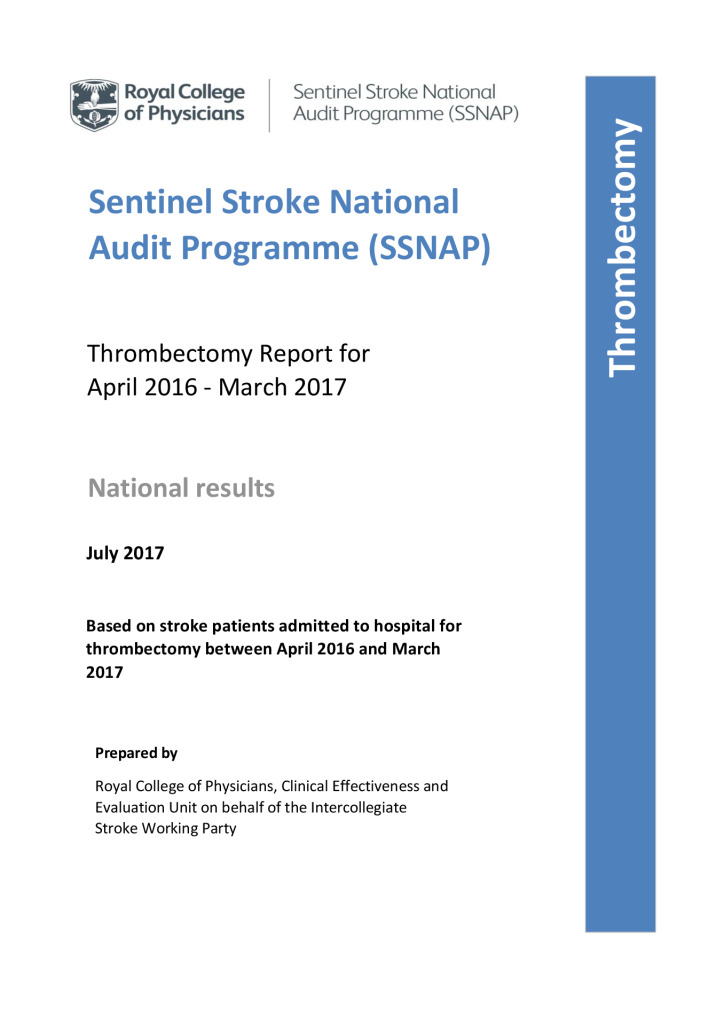Sentinel Stroke National Audit Programme (SSNAP): Thrombectomy Report for April 2016 – March 2017
Thrombectomy (intra-arterial intervention) is an emerging treatment in ischaemic stroke. It involves insertion of a guidewire catheter tube into an artery in the groin, and feeding this up into the blocked artery in the brain. The clot is then removed using a mechanical device with the aim of restoring blood and oxygen flow to the brain. If technically successful and done in time thrombectomy can greatly improve the outcome of the brain injury due to stroke in selected patients.
The evidence base for using thrombectomy in treating ischaemic stroke has expanded over the past 2 years but the implications for implementation in routine clinical practice are still emerging. For any service providing thrombectomy, ensuring that treatment is provided safely and effectively is of the highest clinical importance. For this reason SSNAP added questions on thrombectomy provision to the mandatory core dataset on 1 October 2015.


